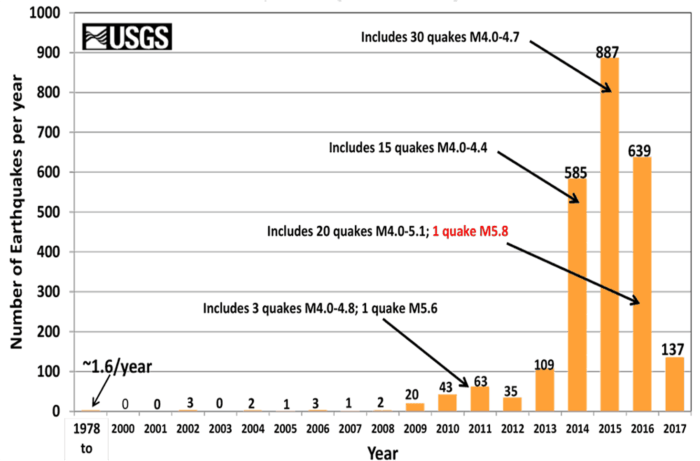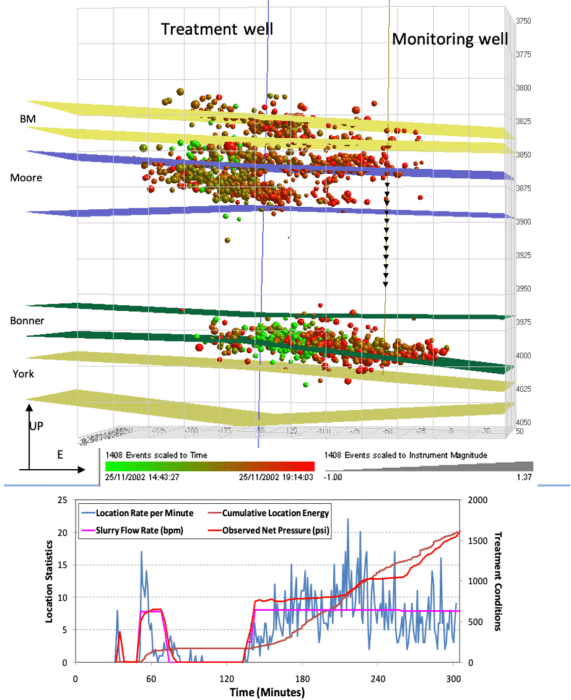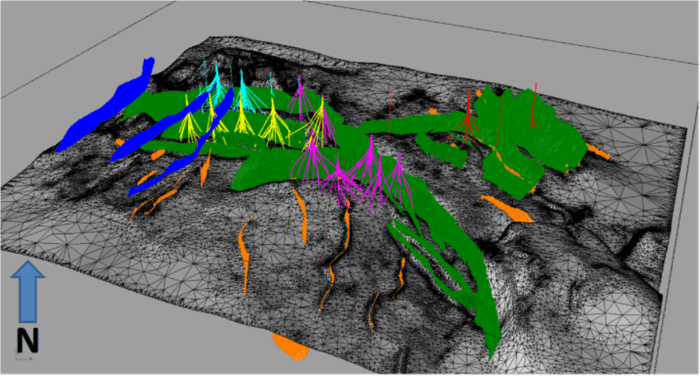The go-to failure criterion for most geomechanical applications, Mohr-Coloumb failure, shows that shear failure occurs when the normal effective stress is reduced or the shear stress increases. The reduction in normal effective stress can occur due to a decrease in the total normal stress or an increase in fluid pressure. The general assumption is that the total normal stress and the in-situ shear stress is constant – and therefore Mohr-Coloumb failure is solely driven by a pressure change.
Fluid injection due to, for example, produced water disposal or hydraulic fracturing operations – resulting in an increase in pore pressure – near faults or other structural features in areas with high in-situ shear stress (e.g., a strike slip tectonic regime) may lead to induced or triggered failure of the weaker planes (natural fractures or faults), which are reflected as seismic events. Some of these seismic events (micro earthquakes) are of low magnitude (commonly called microseismicity) while other seismic events can be of a magnitude 4 or higher.
In order to evaluate fault stability, it is critical to understand the in-situ stress magnitudes and orientation, pore pressure and any changes and fault geometry. In addition, proper modeling of fault stability will also allow for the assessment of fault leakage, which is a central concern for underground storage of CO2 and hydrocarbons.




Induced vs. Triggered Seismicity
It is critical to bear in mind that injection or depletion operations often do not impart significant stress changes in the formations. Simply put, these operations do not significantly alter the existing in-situ stresses, particularly the in-situ shear stresses. This implies, and is supported by field data, that cases of field micro- or macro-seismicity are most-often associated with formations under high initial shear stresses.
Where a causative activity can account for most of the stress change or energy required to produce the seismicity, this would be an induced event; however, where the causative activity accounts for only a fraction of the stress change or energy associated with the seismicity (i.e., tectonic loading plays a primary role), the event is more properly called a triggered event – as is the case for the majority of oilfield-related seismic events. Simply put, rather than creating the driver for seismicity (shear stresses), most oilfield activities activate or accelerate failure (high shear stresses naturally exist and the resistance to the shear failure is reduced, triggering the seismic event).
Considering the Complete Geomechanics Picture
As indicated above, the general assumption is that seismic events are solely caused by pressure changes. This is incorrect and misleading. At OFG, we evaluate the full range of possible causes for shear failure seismicity:
- – Unfavorable structural geometries (e.g., fault strike relative to the stress field)
- – High initial shear stresses (e.g., strike-slip stress region)
- – Increases in shear stresses (e.g., prior formation failures)
- – Decreases in total normal stresses (e.g., regional depletion effects)
- – Reduction in shear resistance (i.e., reduction in cohesion or friction angle) via
- – Increasing formation pressures

